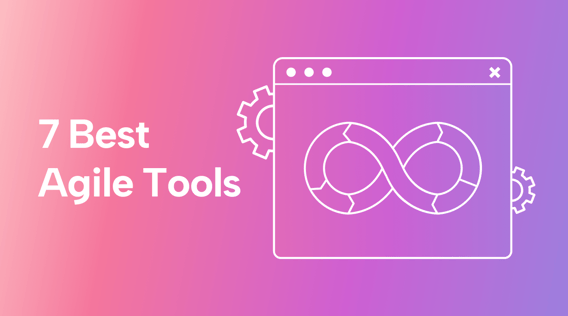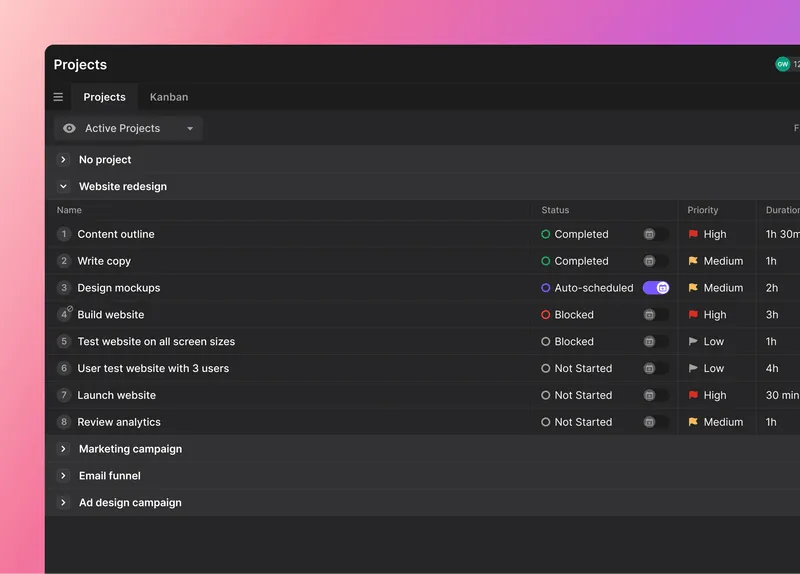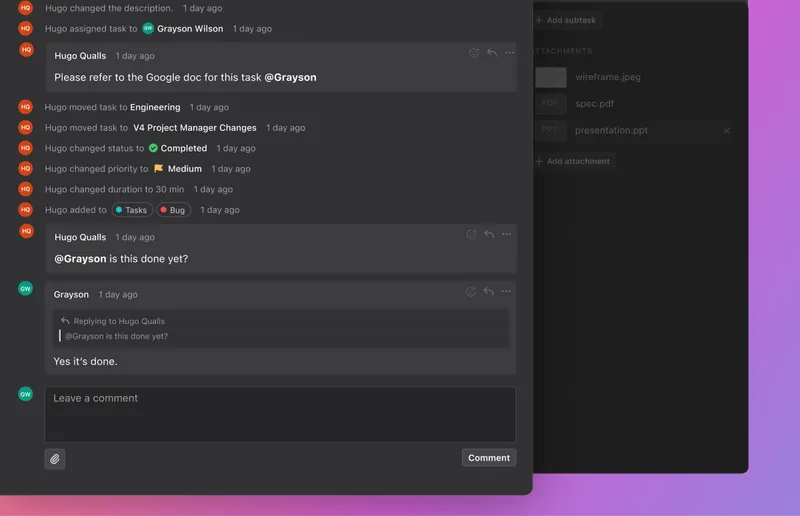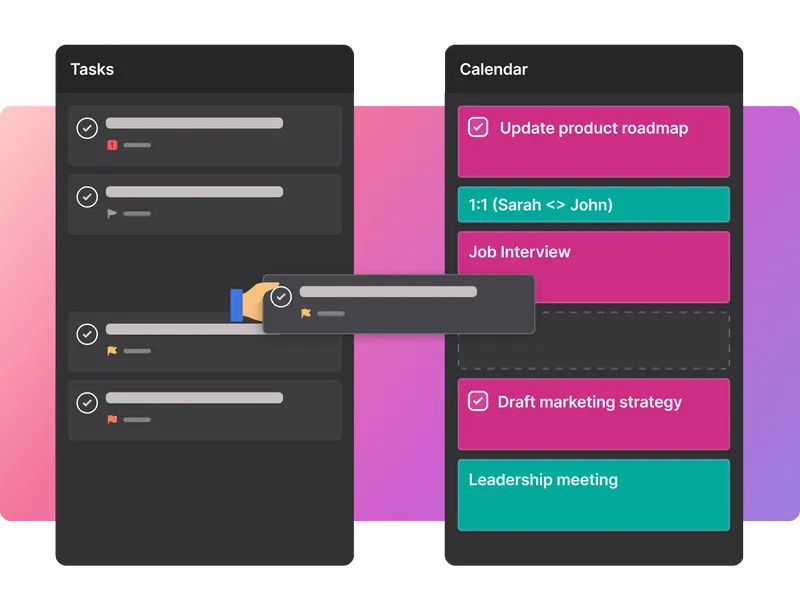Agile project management has become a buzzword in the business world and for good reason.
It promises improved teamwork, faster delivery, and increased productivity.
But let's face it — Agile can quickly turn into chaos without the right tools.
And with so many options out there, it can be hard to know where to start. Should you go for the ones with Gantt charts? Lean towards Kanban boards? Or try something else entirely?
Fret not because we'll share the seven best Agile project management tools for simplifying your projects. Whether you're a software developer, project manager, Scrum master, or anyone involved in Agile project management, these tools will help you streamline your workflow and stay on top of your tasks.
So let’s dig right in.
What are Agile tools?
In Agile project management, tools refer to various techniques and methods used to implement Agile methodologies.
These tools are designed to streamline things like:
- Team collaboration
- Project planning
- Task management
- Reporting
All of which are essential elements of Agile project management.
Agile tools developed along with Agile methodologies, a set of values and principles for software development. These methodologies emphasize delivering working software iteratively and collaborating closely with customers.
These values and principles were born from the Agile Manifesto, a document created by software developers seeking better ways of delivering software.
While there are many Agile tools available, they all share the goal of simplifying project management. By using Agile tools, Agile teams can stay organized, focused, and on track, making sure that projects are completed on time and within budget.
Image sourceOne example of an Agile tool is Motion. This project management platform provides features such as task management, collaboration, and reporting, all of which help Agile teams work more efficiently and effectively.
Why should you use Agile tools?
Agile tools provide teams with a framework to manage work by focusing on incremental and iterative development, collaboration, and flexibility.
Agile tools help teams break down work into smaller, more manageable chunks, allowing continuous improvement and progress. Agile tools allow teams to work together more closely, communicate more effectively, and adapt to changes in real-time.
This, in turn, leads to increased productivity and better outcomes.
For example, let's say a team is building a mobile app.
They might use Agile tools to:
- Track their progress and identify roadblocks
- Create a task list and plan sprints
- Visualize the project's status and prioritize tasks
- Collaborate and share ideas
- Make changes to the project requirements as needed
Here are some important benefits that Agile tools provide:
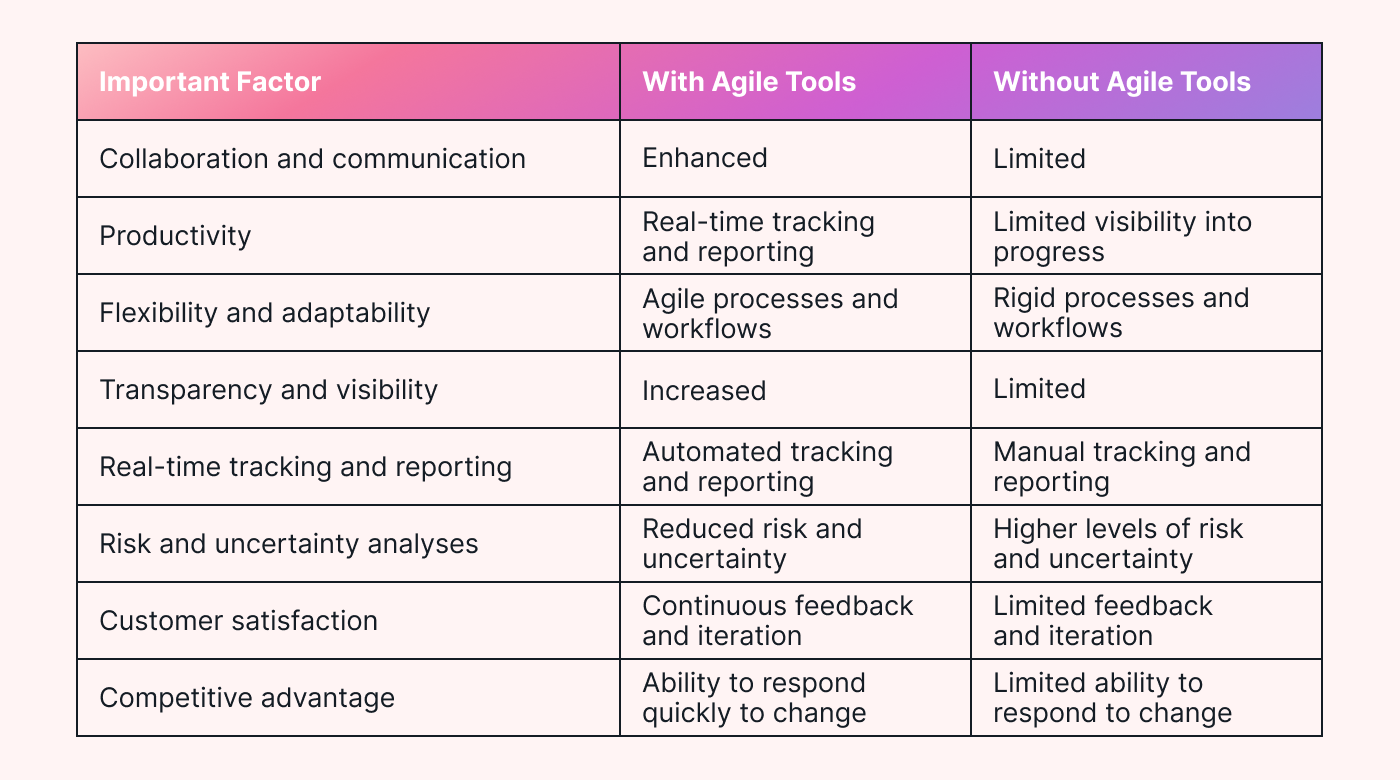 |
Top 7 Agile tools & techniques
Agile methodologies have gained popularity due to their ability to improve efficiency and productivity in software development.
Below are the top seven Agile tools and techniques to help you implement Agile methodologies effectively.
Collaborative space
A collaborative space is a digital platform designed to facilitate real-time communication. It provides a centralized location where team members can share information, collaborate on tasks, and discuss projects, regardless of their physical location.
Collaborative spaces work by integrating a variety of communication tools into a single platform.
These tools include chat, video conferencing, document sharing, and project management features. Team members can use these tools to communicate with each other in real-time, share documents, assign tasks, and track progress.
Some potential use cases for collaborative spaces include:
- Remote team collaboration
- Cross-functional team collaboration
- Project management
- Customer support
Teams of all sizes and industries can use collaborative spaces, including software development, marketing, sales, and customer service.
Collaborative spaces are essential for modern teams that need to stay connected and productive in today's fast-paced work environment.
Some examples of collaborative tools include Slack, Microsoft Teams, and Google Meet.
Task management system
A task management system is a tool that helps teams organize and prioritize their tasks and projects systematically. It allows team members to assign, track, and watch the progress of their tasks in real-time.
Task management systems work by breaking down projects into smaller, manageable tasks that can be assigned to individual team members based on their skill sets and workload.
Tasks can be prioritized, labeled, and assigned deadlines, allowing team members to manage their time effectively and ensure that important tasks are completed on time.
Some potential use cases for a task management system include:
- Project management
- Onsite or remote team collaboration
- Task delegation (using task list)
- Workflow optimization
For example, a marketing team might use a task management system to plan and execute a social media campaign.
Task management systems often include unique features such as task prioritization, deadline tracking, task assignment, and progress monitoring. These features allow teams to streamline workflows, improve communication, and stay on top of their tasks.
Motion is a popular task management tool used by teams across various industries. Project managers, software development teams, marketing teams, and other professionals use it to manage various tasks and projects.
Kanban board
A Kanban board is a visual task management tool that allows teams to manage and track their workflow in a highly transparent way.
Typically, a Kanban board is a physical or digital board with columns representing different stages of a process or project, with cards representing individual tasks that move across the board from left to right as they progress.
One of the main benefits of using a Kanban board is that it provides a clear and visual overview of the team's progress. This allows easier collaboration, communication, and prioritization. It also helps to reduce bottlenecks and identify any areas that need improvement.
Some potential use cases for a Kanban board include:
- Software development
- Marketing campaigns
- Event planning
- Project management
Below is an example of a project with a Kanban board using Motion.
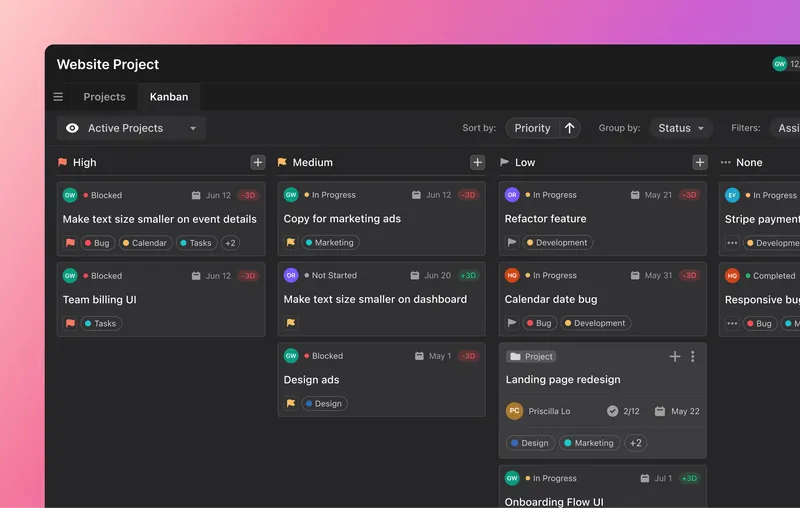 |
Kanban boards typically find extensive use in Agile methodologies, especially in Scrum, which is a framework for managing and completing complex projects.
Team members from various industries, including software development, project management, marketing, and sales, use Kanban boards to manage and streamline their workflows.
Scrum board
Similar to a Kanban board, a Scrum board is a tool used to implement the Scrum framework, which is an Agile methodology used in software development. A unique feature that sets Scrum board apart from Kanban is the ability to include metrics such as cycle time and lead time. Which can help to identify areas for improvement in the development process.
The tool is particularly useful for teams working on complex projects with multiple tasks and dependencies.
Software development teams typically use Scrum boards, but it can be used by any Scrum team that follows the Scrum frameworks.
Just like with Kanban, the Scrum board is typically divided into several columns that represent the different stages of the development process, such as “to do,” “in progress,” and “done.” A card that moves from column to column as it progresses through the development process to represent each task.
One of the key benefits of a Scrum board is that it provides a visual representation of the progress of a project. This overview allows team members to easily see what tasks have been completed and what still needs to be done.
This can help to keep team members organized, especially if their project runs in iterative cycles.
Some potential use cases for a Scrum board include:
- software development
- product management
- project management
Burnup and burndown charts
Burnup and burndown charts are often used to track the progress of an Agile project, particularly in software development.
Burnup charts show the total amount of work completed over time, while burndown charts show the amount of work remaining over time. These charts help teams identify trends, track progress, and make informed decisions about the project.
Potential use cases for burnup and burndown charts include:
- Tracking the progress of user stories or features in an agile project
- Monitoring the velocity, or pace of work, of the team
- Identifying potential issues or risks in the agile project
By visualizing the amount of work completed and remaining, teams can better plan and prioritize their work.
A unique feature of burnup and burndown charts is that they provide a quick snapshot of project progress to date and can be easily shared with stakeholders. They can also be customized to fit the specific needs of a team or project.
Burnup and Agile development teams, project managers, and stakeholders commonly use burndown charts to track progress and ensure the project is on track to meet its goals.
User stories
User stories are the heart of agile project management, and describe the project requirements from the point of view of an end-user. They are a critical part of Agile methodology and capture the desired outcomes for a product or project.
User stories ensure the focus remains on the end-user and their needs throughout the Agile project development process. They provide a clear and concise understanding of what the user wants to achieve and the features or functions required to make it happen.
This makes it easier for development teams to prioritize tasks and make decisions about what to build next.
User stories typically follow a simple format of “As a [user], I want [action], so that [benefit].” For example, “As a user, I want to be able to search for products by category to quickly find what I'm looking for.”
Product owners, stakeholders, and development teams typically create and use user stories in Agile projects. They can be written on index cards or digitally and are often displayed on a physical or virtual board to help visualize progress and priorities.
Story mapping
Story mapping is a collaborative technique used to visually represent a product's user journey. It allows teams to prioritize features and identify potential gaps in the product. Story mapping is usually done with stakeholders and team members in a workshop-style setting.
To create a story map:
- The team starts by identifying the user personas and user goals.
- Then, they break down the user journey into smaller components called “user activities.”
- Each user activity is then expanded into “user stories” that describe the specific features or requirements needed to complete that activity.
- The user stories are then grouped into “epics,” which are high-level user activities (and broken down further into smaller user stories.)
Some potential use cases for story mapping include:
- Product development
- Project management
- Marketing campaigns
One unique feature of story mapping is that it provides a holistic view of the product and allows teams to prioritize features based on the user journey.
Story mapping but can be used by anyone looking to better understand their product or project.
Include Agile project management software in your process
Agile tools are an essential component of modern project management.
Among the various Agile tools discussed, Motion stands out due to its unique features and capabilities. Motion is an Agile project management tool that enables entire teams to manage their Agile projects with ease. With Motion, teams can track their progress in real-time, collaborate seamlessly, and streamline their workflows.
Some potential use cases for Motion include:
- Software development projects
- Marketing campaigns
- Product launches
- Event planning
Motion's clean interface and unique features, such as customizable workflows, Kanban boards, and story mapping, make it an ideal tool for Agile project management.
Learn more about Motion or sign up for a 7-day free trial.

